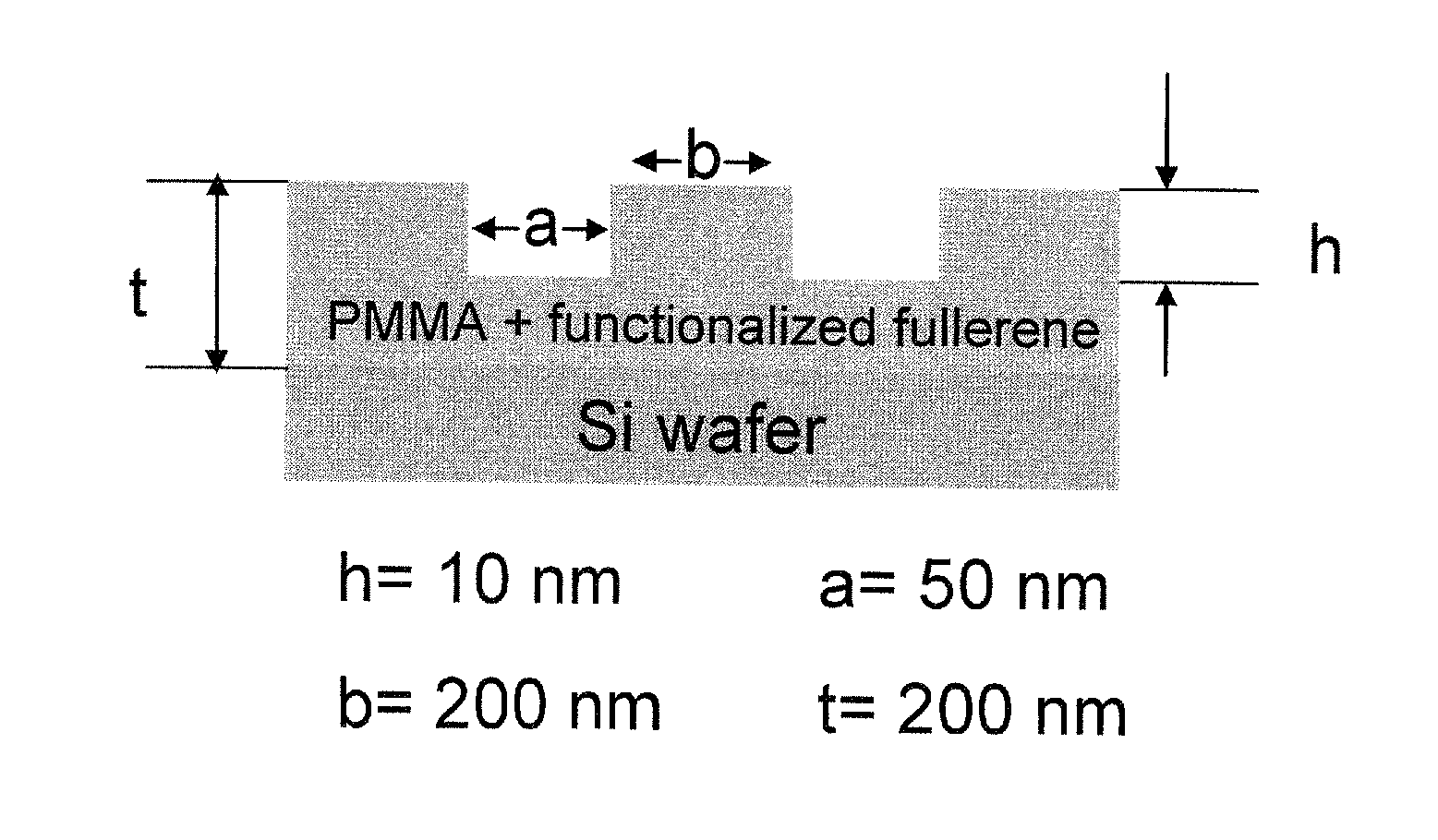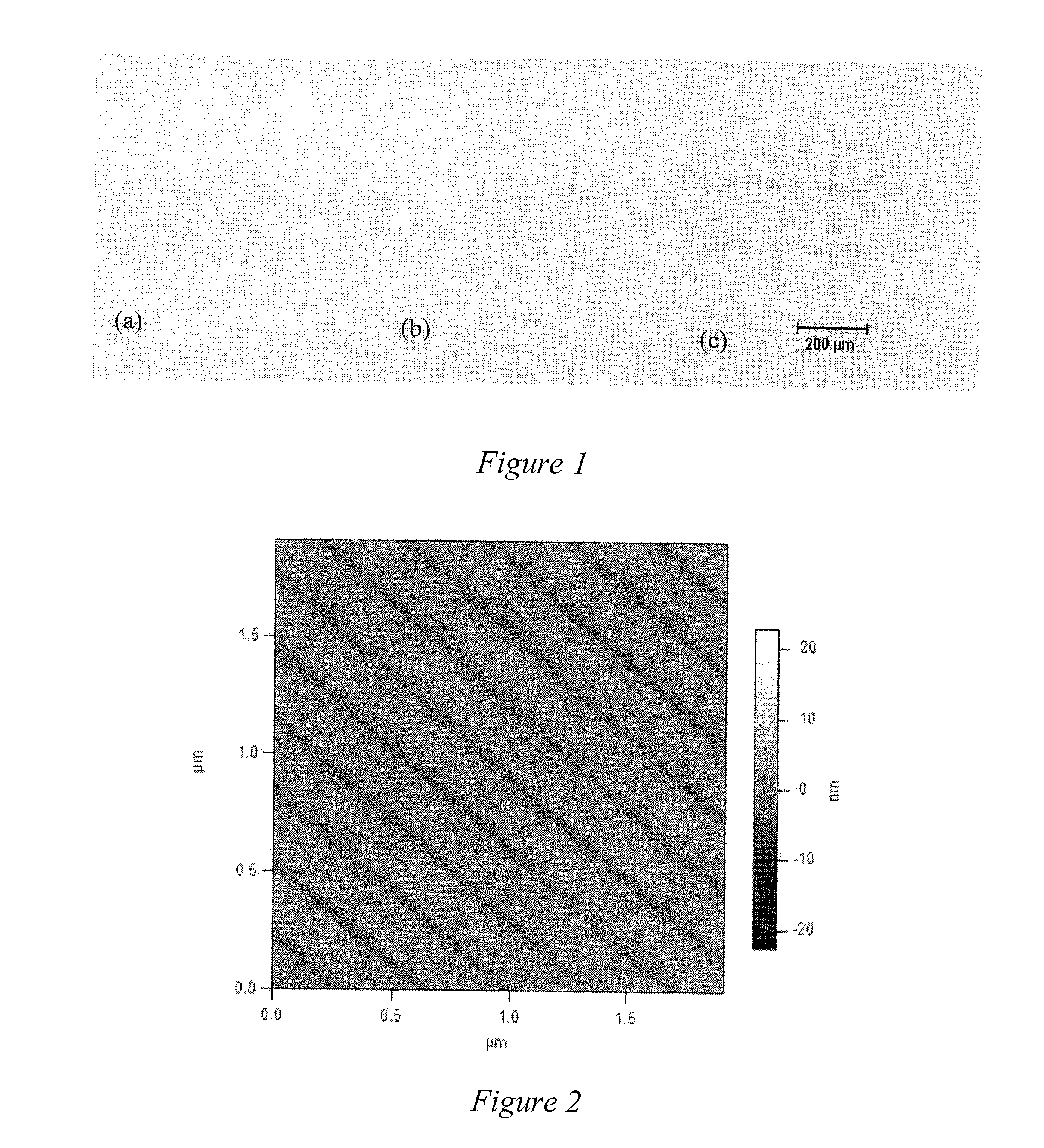Functionalized fullerenes for nanolithography applications
a fullerene and nanolithography technology, applied in the field of nanolithography applications, can solve the problems of limited diffraction resolution, limited utility of pmma, and limited diffraction resolution
- Summary
- Abstract
- Description
- Claims
- Application Information
AI Technical Summary
Benefits of technology
Problems solved by technology
Method used
Image
Examples
example 1
[0032]A commercially available electron beam resist, (PMMA A2 950K in anisole; Microchem, Newton, Massachusetts) was purchased and a homogeneous solution was prepared by dissolving a functionalized fullerene, C60H18 to C60H20, at 0.1 weight % in the PMMA resist solution. This solution was spin coated on the surface of a silicon wafer resulting in a film with the approximate thickness of 200 nm. After the coating step, the wafer was baked in an oven at 190° C. for 45 minutes. A Raith-150 direct write electron beam lithography tool was employed for irradiation of a nanostructured pattern with an electron beam having a 10 kV accelerating voltage using software provided with the tool.
example 2
[0033]The electron beam exposed coated substrate of Example 1 was examined using an optical microscope and an Atomic Force Microscope (AFM). An optical image of the exposed wafer without any traditional development step is shown in FIG. 1. This image consists of 25 microns wide lines and 50×50 microns square. The square boxes contain additional features with nanometer dimensions. These square boxes were imaged with AFM. The AFM image of a portion of the box is displayed in FIG. 2. The lines have widths of approximately 50 nm. FIG. 3 is a three-dimensional image of the portion of the box displayed in FIG. 2 and shows that the depth of the lines is approximately 10 nm. A schematic is given in FIG. 4 of the patterned substrate of the boxes illustrating the approximate dimensions.
PUM
 Login to View More
Login to View More Abstract
Description
Claims
Application Information
 Login to View More
Login to View More - R&D
- Intellectual Property
- Life Sciences
- Materials
- Tech Scout
- Unparalleled Data Quality
- Higher Quality Content
- 60% Fewer Hallucinations
Browse by: Latest US Patents, China's latest patents, Technical Efficacy Thesaurus, Application Domain, Technology Topic, Popular Technical Reports.
© 2025 PatSnap. All rights reserved.Legal|Privacy policy|Modern Slavery Act Transparency Statement|Sitemap|About US| Contact US: help@patsnap.com



